

Geopolitics



Geopolitics
• F ounded in 1875 by Genzo Shimadzu Sr. in Kyoto, Japan, Shimadzu Corporation was manufacturing physics and chemistry instruments.
• T he company grew significantly under the leadership of Genzo Jr., one of Japan’s most remarkable inventors.
• S himadzu’s product portfolio of medical systems, analytical instrumentation and more enables its customers to protect people’s health and lives as well as the environment.
• Shi madzu’s culture of “Contributing to Society through Science and Technology” has been inherited by each new generation of employees worldwide.

ION AROCENA, CEO of AseBio, is a biologist by training and holds an Executive MBA. He began his professional career at the Technology Transfer Office of the Autonomous University of Madrid and later worked at Genoma España, where he assessed biotech projects and supported technology transfer activities. He then spent ten years as an Investment Manager at Suanfarma Biotech SGECR, a pioneering life sciences VC management company in Spain, before joining AseBio as its CEO.
Europe stands at a decisive crossroads in its quest to remain competitive, innovative and autonomous in a world shaped by geopolitical tensions, health crises and an urgent green transition. In this context, biotechnology has emerged as one of the most powerful tools to strengthen the continent’s strategic autonomy and secure a sustainable growth path.
Its potential spans critical sectors: from breakthrough therapies that safeguard health sovereignty to more resilient and sustainable crops ensuring food supply, and bio-based solutions that reduce dependence on fossil fuels while supporting a circular and climate-friendly economy. Biotechnology is not merely a technology; it is an innovative backbone capable of generating economic value, high-quality jobs and tangible answers to society’s greatest challenges. It also serves as a bridge between science, industry and citizens, offering transformative applications that can reshape how Europe produces, consumes and competes.
The European Union has started to acknowledge this strategic role by placing biotechnology at the heart of its industrial agenda. Initiatives such as the STEP Regulation and the upcoming European Biotechnology Act aim to build a framework that allows companies to innovate, scale up and compete globally. This ambition is reinforced by broader EU strategies in health data, green transition and industrial resilience, which together create a window of opportunity to embed science into Europe’s value chains. To succeed, ambition must be translated into concrete action, ensuring coherence between Member States and coordination across public and private actors.
To seize this moment, Europe must move forward on three key fronts: faster and more accessible financing to bridge science and market, modern and predictable regulation to reduce uncertainty, and stronger cooperation to expand production, research and innovation capacity across the continent. Public–private partnerships, robust data infrastructures and talent attraction will also be decisive to remain competitive against other global powers. At the same time, building trust and fostering societal acceptance of biotechnological advances will be essential to unlock their full impact.
Spain is well positioned to contribute to this momentum. With over one thousand biotech companies and steadily growing R&D investment, our ecosystem combines scientific talent, international outlook and a dynamism that can make us a European benchmark. At AseBio, we advocate for a stable and ambitious framework that unlocks biotechnology’s full potential to improve lives, protect the environment and ensure that Europe not only participates in but leads the economy of the future. Spain’s ability to connect cutting-edge research with industrial capacity represents a unique lever to drive Europe’s biotech revolution. ■

Across a dozen start-ups and various Big Tech research labs, an idea has taken root: by pairing the pattern-finding power of artificial intelligence (AI) with biological maps of ageing, you may be able to slow – or in some cases reverse – the molecular processes that make us frail as we grow old. Investor interest in longevity is huge, a s well as in tackling the chronic diseases that affect it. The US and China have taken the lead in the field, but Europe should gear up
6 European Commission unveils €10bn Life Sciences Strategy
8 EASAC calls for immediate action
10 EC celebrating the Draghi report
12 Novo Nordisk: Ups and downs – and ups again; BIO2REG Network: regions in transition
18 Analyst commentary
20 Update on clinical trials
33 IP: US-policy-made challenges for the biopharmaceutical sector
35 Interview: Thomas Soloway, CEO, Dr Elisa Kieback, CTO, Co-founder, T-knife Therapeutics GmbH
36 BioSpain 2025 breaks records
bioRN cluster, Germany







66 Targeted cytokine duo drives NK cell activation and T killer cell cytotoxicity in cancer immunotherapies
67 Blocking chitinase-like proteins reverses allergen-induced chronic airway remodeling; ChatGPT’s blind spots; French researchers reverse TH17 cell-driven autoimmunity; DNA methylation patterns identify brain insulin resistance
68 Researchers unmask CAR-T haematotoxicity leading to 50% complete remissions
70 Big Bang in AI drug development
71 Event: AI for transition –AI for change
74 Pretrained generative AI enters pharmacology
75 Interview: AI-guided, non-invasive sepsis diagnosis
Dr Maximilian Dietrich, University Clinic Essen, Germany
69 Biopeople
77 News from associations
82 Encore
IMPRINT European Biotechnology (ISSN 2364-2351) is published quarterly by: BIOCOM Interrelations GmbH, Jacobsenweg 61, D-13509 Berlin, Germany, CEOs: Joachim Eeckhout & Michael Kuhrt, Tel.: +49-30-264921-0; Email: service@european-biotechnology.com, Internet: www.european-biotechnology.com; Team: Joachim Eeckhout, Thomas Gabrielczyk (Editor in Chief), Dr. Georg Kääb, Maren Kühr, Uta Mommert, Derrick Williams (Co-editor); Advertising: Oliver Schnell, +49-30-264921-45, Christian Böhm, +49-30-264921-49, Andreas Macht, +49-30-264921-54; Distribution: Nancy Weinert +49-30-264921-40; Graphic Design: Michaela Reblin; Production: Martina Willnow; Printed at: Königsdruck, Berlin; European Biotechnology Life Sciences & Industry Magazine is only regularly available through subscription with a BIOCOM CARD. Annual subscription BIOCOM CARD Europe: €80 for private individuals (students €40) incl. VAT, €120 plus VAT for corporates. Prices includes postage & packaging. Ordered subscriptions can be cancelled within two weeks directly at BIOCOM Interrelations GmbH. The subscription is initially valid for one calendar year and is automatically renewed every year after. The subscription can be cancelled at any time and is valid until the end of that calendar month. Failures of delivery, which BIOCOM Interrelations GmbH is not responsible for, do not entitle the subscriber to delivery or reimbursement of pre-paid fees. Seat of court is Berlin, Germany. As regards contents: individually named articles are published within the sole responsibility of their respective authors. All material published is protected by copyright. No article or part thereof may be reproduced in any way or processed, copied, and proliferated by electronic means without the prior written consent of the publisher. Cover Photo: © Mirror-images stock.adobe.com; ® BIOCOM is a registered trademark of BIOCOM AG, Berlin, Germany
In the race for biotech supremacy between the US and China, the US President’s shifting policies are causing waves of uncertainty for 3,000+ American biotech SMEs. At the same time, in the area of patents and financing, China is surging ahead at a breakneck pace. Who will be behind the next wave of modalities? Can global partnerships survive the high-stakes rivalry?

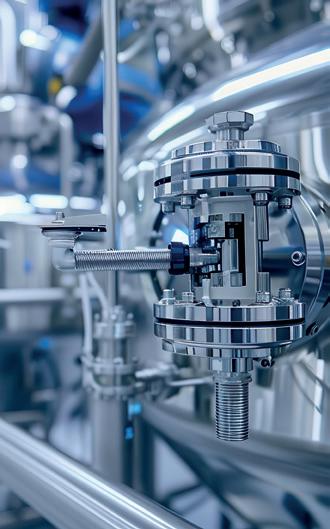
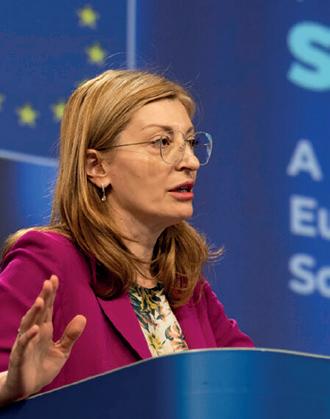
In August, the European Commission unveiled a €10bn Life Sciences Strategy aimed at pushing Europe’s food, agricultural, pharmaceutical and industrial biotechnology sectors to a leading position globally by 2030. In addition, the EC wants to pass €3.2bn annually to biotech in its mid-term financing plan
It’s a pleasure to introduce myself as the new CEO and owner of BIOCOM Interrelations GmbH, the publisher behind EuropEan BiotEchnology MagazinE
If we haven’t met yet, I’ve spent the past 13 years in the biotech media world, from humble beginnings as a student blogging in France to founding Labiotech.eu, now one of the most recognised online media outlets in the biotech industry.
Over the years, I’ve been an admirer, a reader, and a competitor of EuropEan BiotEchnology MagazinE. To me, it always stood out as a publication of real quality and a high-value piece of intelligence. I still remember scanning the media partner stands at conferences, hoping to grab a copy of this magazine and others from the same group.
Today, I’m proud to join the team behind this publication. Of course, taking on such a role is no small task. I’m lucky to share this responsibility with Michael Kuhrt, a long-time insider of the company, who joins me as co-CEO and owner. Together, we’re planning exciting updates for the magazine and its digital presence.
38 Trade barriers and CROs/CDMOs
42 Isolator lines in manufacturing
44 Interview: Jasmin Atarodi, CEO c-ACT Cologne Clinical Research
46 CDMO: An SAP S/4HANA transformation in less than 10 months
48 Biomanufacture in Switzerland
54 AGC Biologics: Shigella jab trials
55 ADCs with reduced side-effects
56 Ultra low freezers
61 Interview with Samantha Cimitan, CEO, Celonic Group
63 Antibodies – cornerstone of ADCs
The European biotech industry deserves a strong, unifying voice, one that brings its community together and highlights its daily innovations. We hope that when you read EuropEan BiotEchnology MagazinE, you’ll feel part of that story too.

Joachim Eeckhout CEO



LONGEVITY Across a dozen start-ups and various Big Tech research labs, an idea has taken root : by pairing the pattern-finding power of AI with biological maps of ageing, you may be able to slow – or in some cases reverse – the molecular processes that make us frail as we grow old. Investor interest in longevity is huge, as well as in the chronic diseases that affect it. The US and China have taken the lead in the field, but Europe should gear up.
Combining AI tools with a pool of rapidly growing knowledge about how ageing mechanisms affect the human body has led to frenetic, well-funded races in areas ranging from generative chemistry and protein design to cellular reprogramming and bespoke in-silico clinical trials. Rich prizes await the winners, not all of them monetary. They include new markets for chronic-disease medicines, as well as geopolitical prestige for countries that can claim progress against ageing itself.
It’s a kind of gold rush that’s seen companies jockey for position with tools and biological targets. Meanwhile, in the background, a strange ‘politics of longevity’ is making headlines. The leaders of Russia and China were recently overheard musing about immortality.
One high-profile example of the marriage between AI and longevity is Insilico Medicine. The company has built an integrated generative-AI stack, and is explicitly pitching it at “extending healthy productive longevity.” Its public materials describe a three-part Pharma.AI platform – Biology42 (data/target discovery), Chemistry42 (generative chemistry and molecular design) and Medicine42 (candidate selection and preclinical planning). The three feed into
one another, with AI suggesting targets from multi-omics and clinical datasets, designing molecules predicted to hit those targets, and prioritising the best candidates for wet-lab validation. The company also runs PandaOmics, an AI pipeline trained to pinpoint ageing-related targets from complex datasets, scanning biological ‘hallmarks’ of senescence to find inter vention points that are both druggable and diseaserelevant. The company says its methods will accelerate early discovery and shorten the path to first-in-human studies, a claim that will be put to the test in the closely watched field of AI-designed therapeutics.
Investors long associated with tech have been pouring capital into longevity ventures in the last few years. One highprofile private wager was recently made by OpenAI’s celebrity CEO. Sam Altman is a backer of Retro Biosciences, a firm pursuing ambitious approaches into areas like blood stem cells and ‘resetting’ cell states. Press coverage in 2025 reported funding in the hundreds of millions, along with a clinical programme for an autophagy-reviving small molecule aimed at Alzheimer-type pathology. That kind of aggressive and public investment crystallises a trend: Silicon Valley capital is moving from data and cloud plays into wet-
lab longevity, pairing deep pockets with AI tools to accelerate discovery.
At the same time, US-based tech giants and other big players are dramatically increasing AI R&D budgets – which comes as no surprise – but also hiring biology talent. So those firms are shifting not only money but infrastructure into applications that include biomedicine and longevity. And they bring to the table assets like clouds and large-scale datasets – resources that can change the economics of long, costly drug discovery. It’s already having an impact across corporate grant programmes, acquisitions of biotech AI start-ups, and new research labs focused on biological applications for foundation models.
Contemporary longevity research tends to be organised around features of ageing often called ‘hallmarks’ – recurring molecular and cellular failures that together drive functional decline. Reviews sometimes condense the field into a dozen interlocking processes: genomic instability, telomere attrition, epigenetic drift, proteostasis loss, impaired autophagy, nutrientsensing dysregulation, mitochondrial dysfunction, cellular senescence, stem-cell exhaustion, altered intercellular communication (including inflammaging) and dysbiosis. Each hallmark is linked to different ›› Read the full story in the printed issue

VALUE CHAIN DISRUPTION In the race for biotech supremacy between the United States and China, US President Donald Trump’s shifting policies – from tariffs to licensing restrictions –are causing waves of uncertainty for 3,000+ American biotech SMEs. At the same time, in the area of patents and financing, China is surging ahead at a breakneck pace. Who will be behind the next wave of innovative drugs? And can global partnerships survive the high-stakes rivalry?
Last June, the Harvard Belfer Center for Science and International Affairs warned that out of five critical tech sectors (AI, biotech, quantum computing, semiconductors and space) “China has the most immediate opportunity to overtake the United States in biotechnology.” It’s not the first time the leading US think tank for technology and national security had words of caution about the country’s fastmoving competitor. Back in 2021, it noted that China was starting to challenge the then unrivalled US role in biotech – a field growing increasingly critical to global power and industry.
It comes as no surprise that the prestigious Harvard institution is sounding an alarm. According to the Nature Index, Harvard was the only remaining US institution in the world’s top ten research locations in 2025; the remaining nine are all in China Since the database was launched in 2014, the number of Chinese research institutions in its top 100 has risen from eight to 42. In the natural sciences, China has now caught up with Europe (42) and surpassed the US (36).
According to the Belfer Center, 2023 data shows the United States was still the global leader in biomedical research and clinical translation at that point, as well as the world’s most important biopharmaceutical market (see Fig. 2B, p.
28), despite having a population (340 million) significantly smaller than the EU (450 million). In the field of innovative biologics, the US held a market share of more than 66% as of 2023 (see Fig. 2A, p. 28).
“There will be a ChatGPT moment for biotechnology, and if China gets there first, no matter how fast we run, we will never catch up.”
As early as 2023, both finance specialists reported that the US had lost its once undisputed leadership role to China in conducting clinical trials in oncology (35% and 39% respectively). According to pharma data specialist IQVIA, in 2023 oncological drugs drove more sales than any othNational Security Commission on Emerging
However, if you look at the figures from global law firm Boehmert & Boehmert on biopharmaceutical patents filed by companies (18,000 in the US vs. 33,000 in China in 2023), China now consistently leads the pack in next-gen biopharmaceuticals. The same is true for data from financial advisors at Arc Group and analysts from gloBalDaTa on the number of clinical trial initiations (6,000 in the US, 7,100 in China – see p. 28).
er biologics, generating US$250bn. China’s expertise in modern oncology drugs, antibody constructs and AI has recently been reflected in financing and M&A activity. In October 2024, the deal volume of Chinese biotechs (US$3.1bn) for the first time exceeded the total corporate financing (US$2.7bn) on which all biotech innovators worldwide normally depend (Fig. 2C, p. 28). The novel financing channel for Chinese biotechs via Western pharmaceutical giants also hit a new peak in the first half of 2025, with US$42.5bn of the US$113bn raised worldwide, according to IQVIA. All those indicators are bringing China closer to its next Five-Year Plan target: to become the world’s top biotechnology power by 2035.
That US President Donald Trump is fully aware of the situation’s gravity is revealed by a leaked government document reported on by The N ew York Times in mid-September. The plan outlined in the document – aimed at slowing China’s growth rate – goes much further than strategies devised by Trump’s predecessor. Joe Biden’s BIOSECURE Act (see europea N BioT echN olog Y 04/24) was intended to bolster US independence from China by making certain IP-critical collaborations with
NOVARTIS although it would be more accurate to call the real winners the many companies that Novartis is currently snapping up or entering into major collaboration agreements with. The Swiss have already invested more than €25bn in mergers and partnerships.
UK I The UK’s pharmaceutical sector faces a growing downward trend as investment, talent, and innovation increasingly shift to the United States. Despite remaining Europe’s top destination for biotech venture capital since 2017, the industry warns that without stronger incentives, regulatory agility, and long-term funding support, Britain risks ceding its life sciences leadership. ■
I’m in biotechnology because

DR SIMONA NEUBAUER, COO, LoopLab Bio GmbH, Vienna, Austria
“... I’m driven by the opportunity to turn discovery into real-world progress — advancing a healthier, more sustainable future for all.”
In an overview of the global bispecific ADC (bsADC) pipeline by GlobalData Plc, a strong footprint of Asia in late phase of bispecific ADCs is obvious. Of 211 bsADCs currently in development – about 14% of all ADCs – 84% remain in preclinical or discovery stages. Four candidates have reached Phase III: three oncology-focused drugs (izalontamab brengitecan, JSKN-003, TQB-2102) in China, and Amgen’s maridebart cafraglitide in Japan for obesity and type 2 diabetes. ■
UK II The NHS England is widening access to BioNTech SE’s cancer vaccine trial BNT113-01 through its Cancer Vaccine Launch Pad (CVLP), helping patients with advanced head and neck cancers join innovative research faster. Coordinated by the Southampton Clinical Trials Unit, the programme will involve over 100 participants across 15 NHS hospitals, including Nottingham. The mRNA vaccine aims to train the immune system to target HPV-related cancer cells.
As the third study supported by the CVLP, the initiative highlights the NHS’s role in accelerating cancer innovation –shortening enrolment times by up to a year. Professor Peter Johnson, NHS national clinical director for cancer, said the expansion will give hundreds of patients access to “cutting-edge advances in cancer care.” ■
Development Stage Split for Active bsADCs
Phase III
Phase II
Phase I
IND/CTA Filed Preclinical
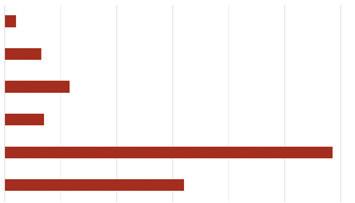
11.–13.11. LISBON The 17th Annual Protein & Antibody Engineering Summit (PEGS) will feature expanded coverage in ML/AI applications in protein engineering, multispecific antibodies, ADCs, emerging targets, oncology, expression, and analytical characterisation.
https://pegsummiteurope.com
2.–3.12. STRASBOURG BioFIT fosters cooperation between science and industry. The event has become Europe’s annual meeting place for technology transfer and the search for innovative ideas from public research institutions, academic spin-offs and emerging biotech companies.
https://biofit.com
WINTER EDITION BIO-Europe in Vienna will be the highlight of our next issue. Industrial biotech and Finances & Investments will be our next focus topics. Players in these fields are invited to present their offering in our special in europeaN BioTechNologY. Want to participate? Just contact Oliver Schnell (+49-30-26492-45) and Andreas Macht (-35) or please mail: marketing@biocom.de. Publishing date is 11 December 25; deadline for ads is 28 November 25.
■
































































Fördergesellschaft IZB mbH
Am Klopferspitz 19 82152 Planegg/Martinsried
Tel. + 49 (0)89.55 279 48-0
Fax + 49 (0)89.55 279 48-29 info@izb-online.de www.izb-online.de








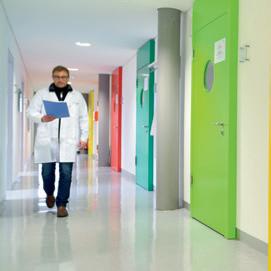



Site: 26,000 m2, S1 laboratories
Real estate and facility management on site
Faculty Club and conference rooms for up to 100 people
Kindergarden (Bio Kids)
Hotel CAMPUS AT HOME
Restaurant SEVEN AND MORE, THE BOWL Food Lounge
IZB network with more than 40 start-ups
In the immediate vicinity are two Max Planck Institutes, faculties and facilities of the LMU, Munich University Hospital – Großhadern
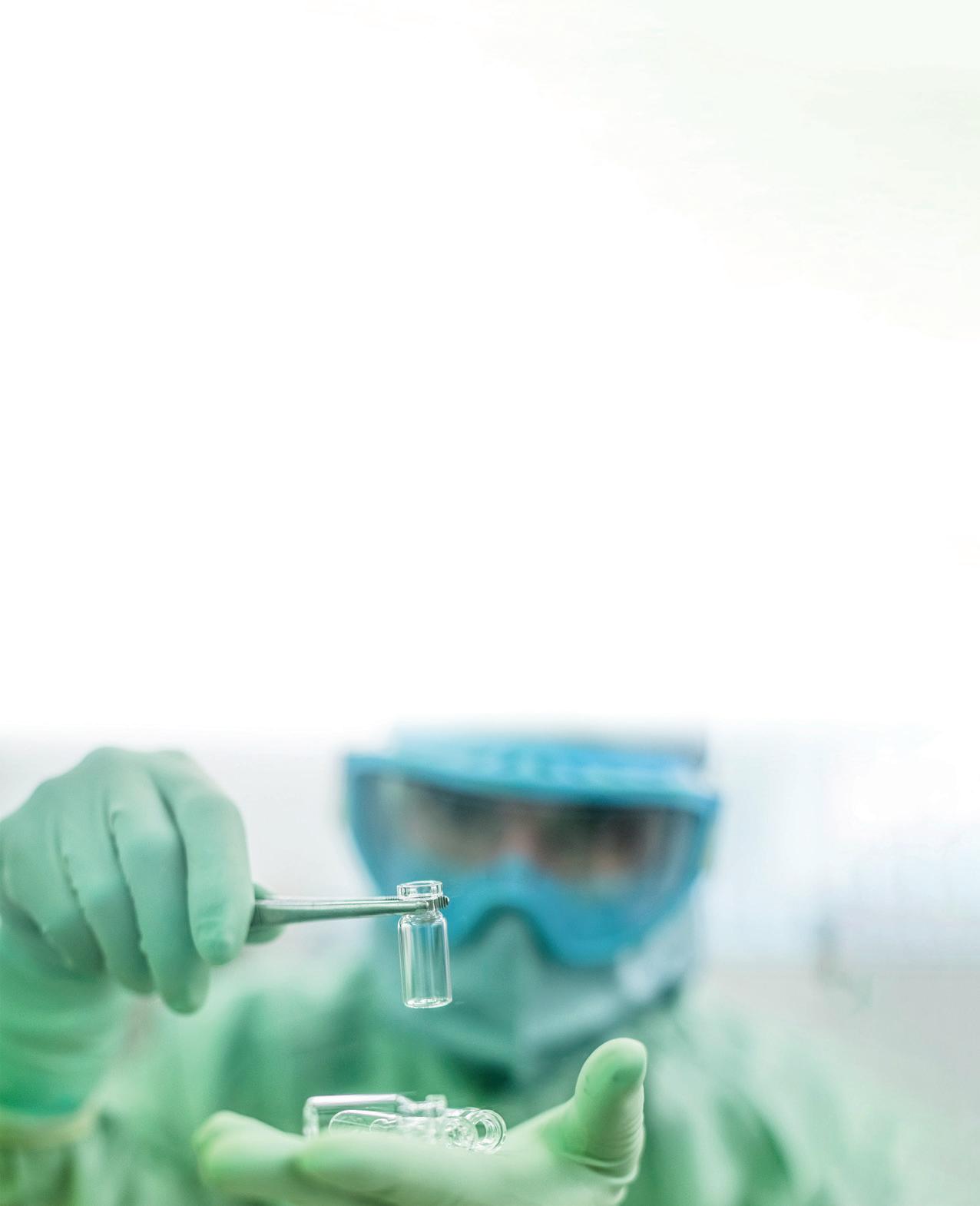
From clinical material to commercial manufacturing
LIVE AND INACTIVATED BACTERIAL AND VIRAL BIOLOGICAL PRODUCTS UP TO BSL 2
ASEPTIC FILLING AND LYOPHILIZATION